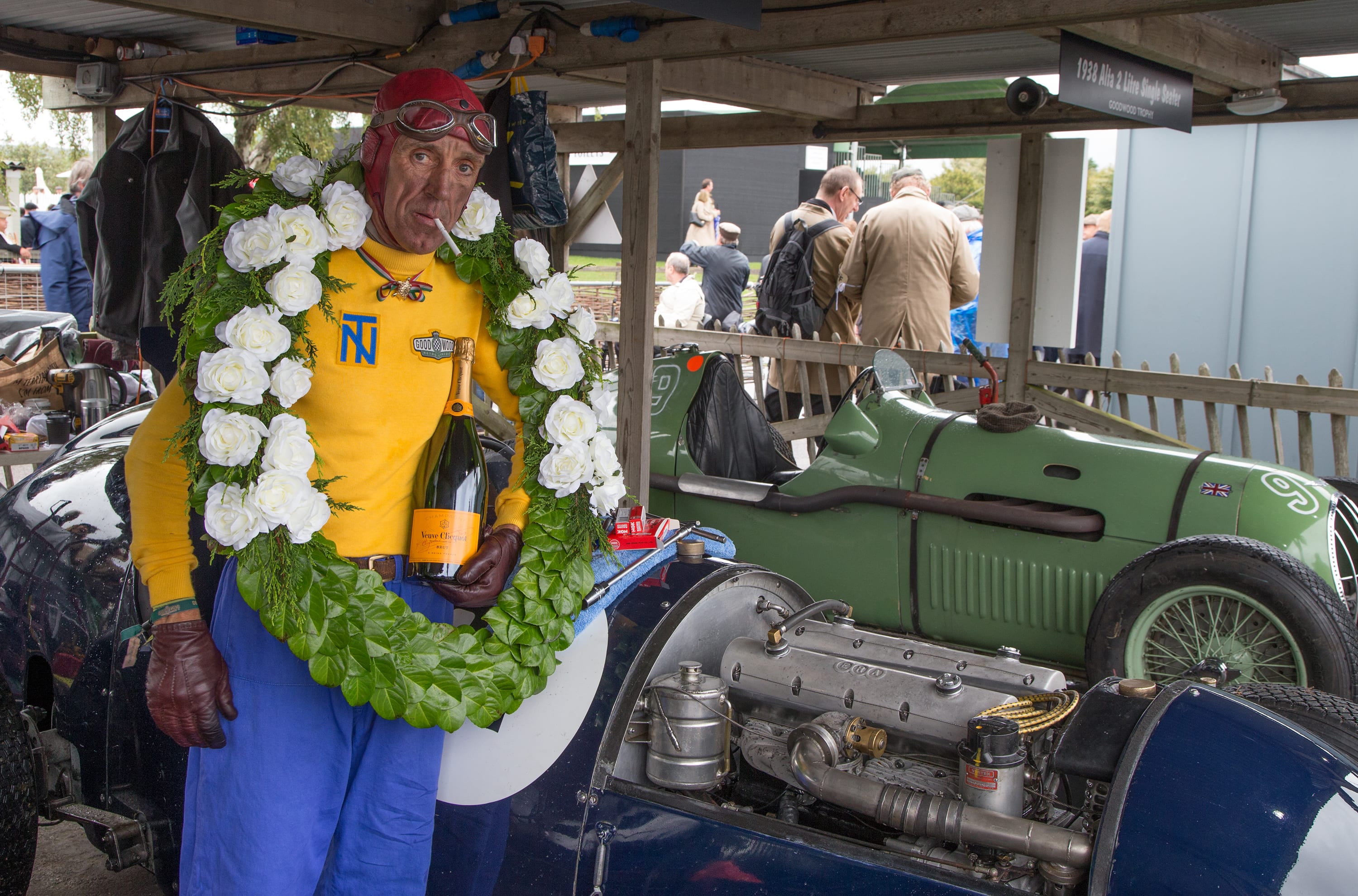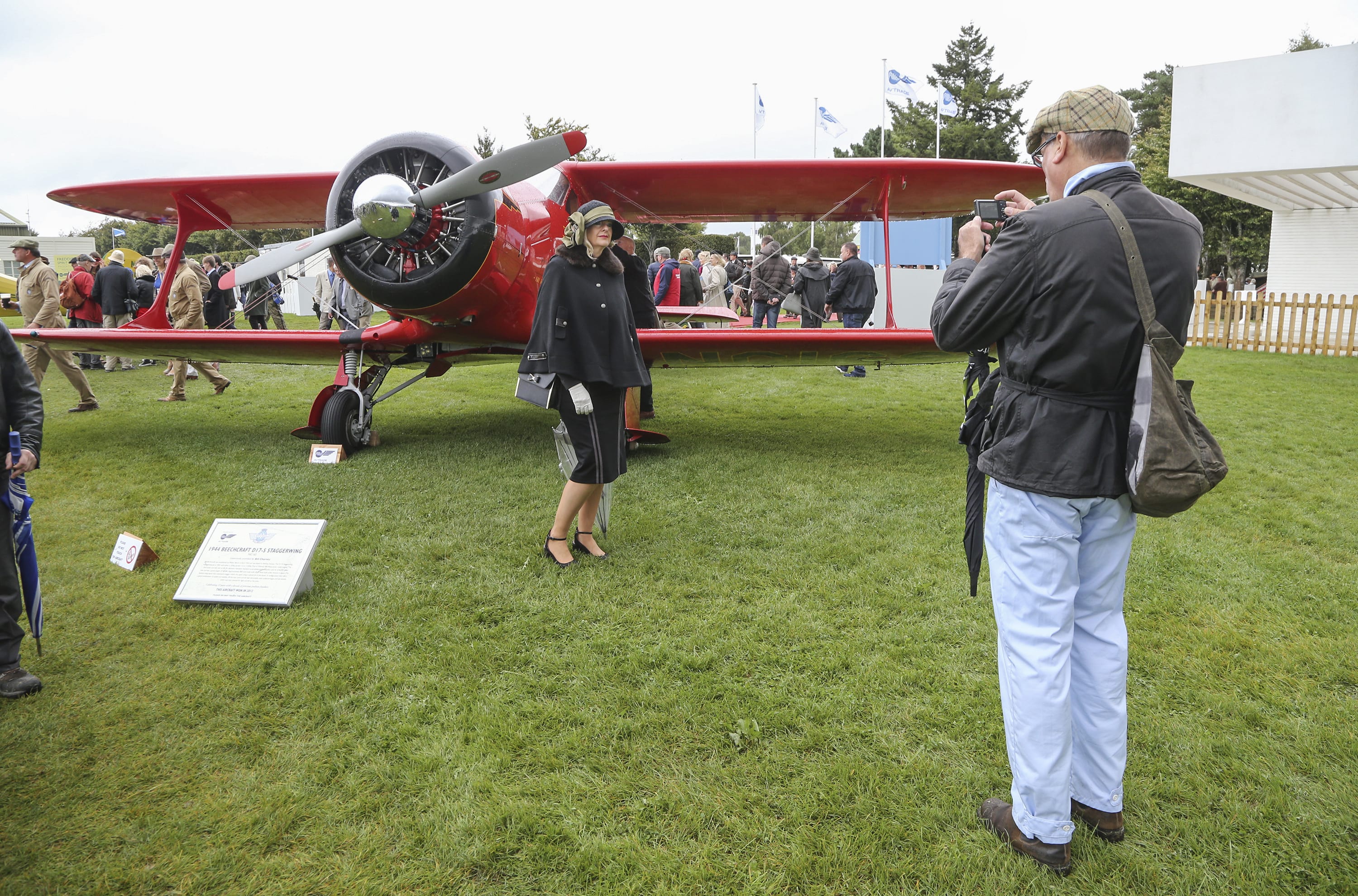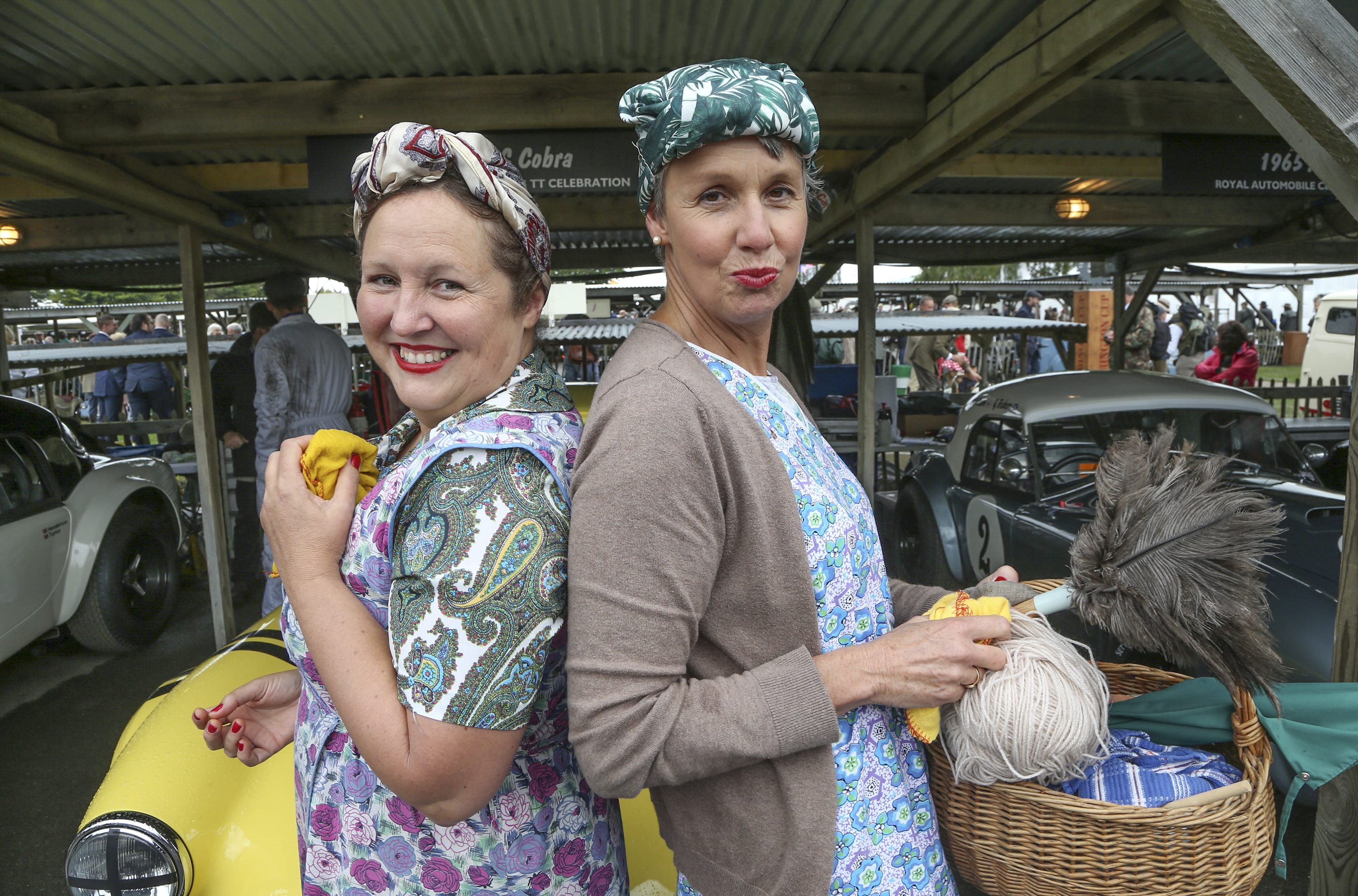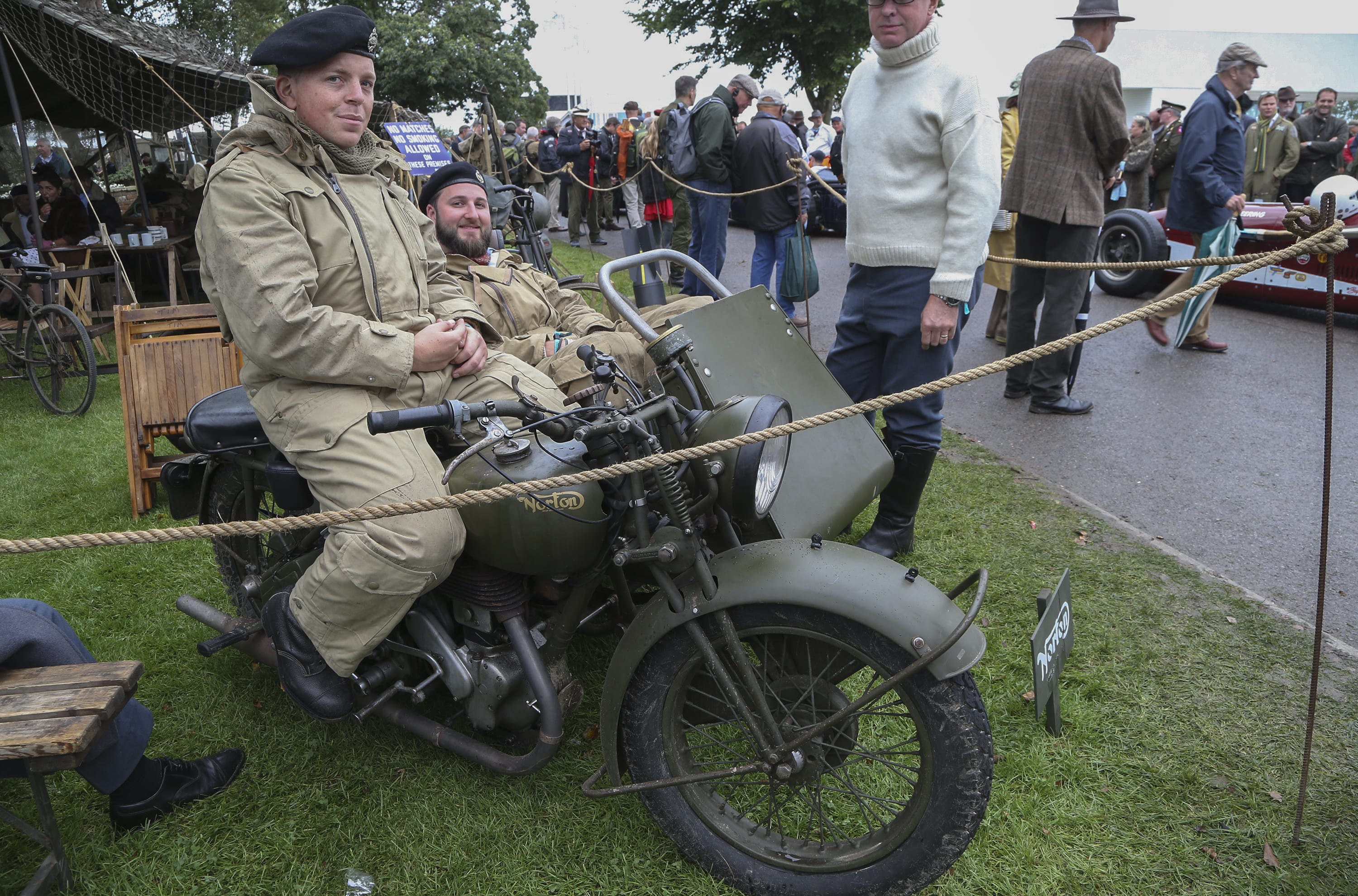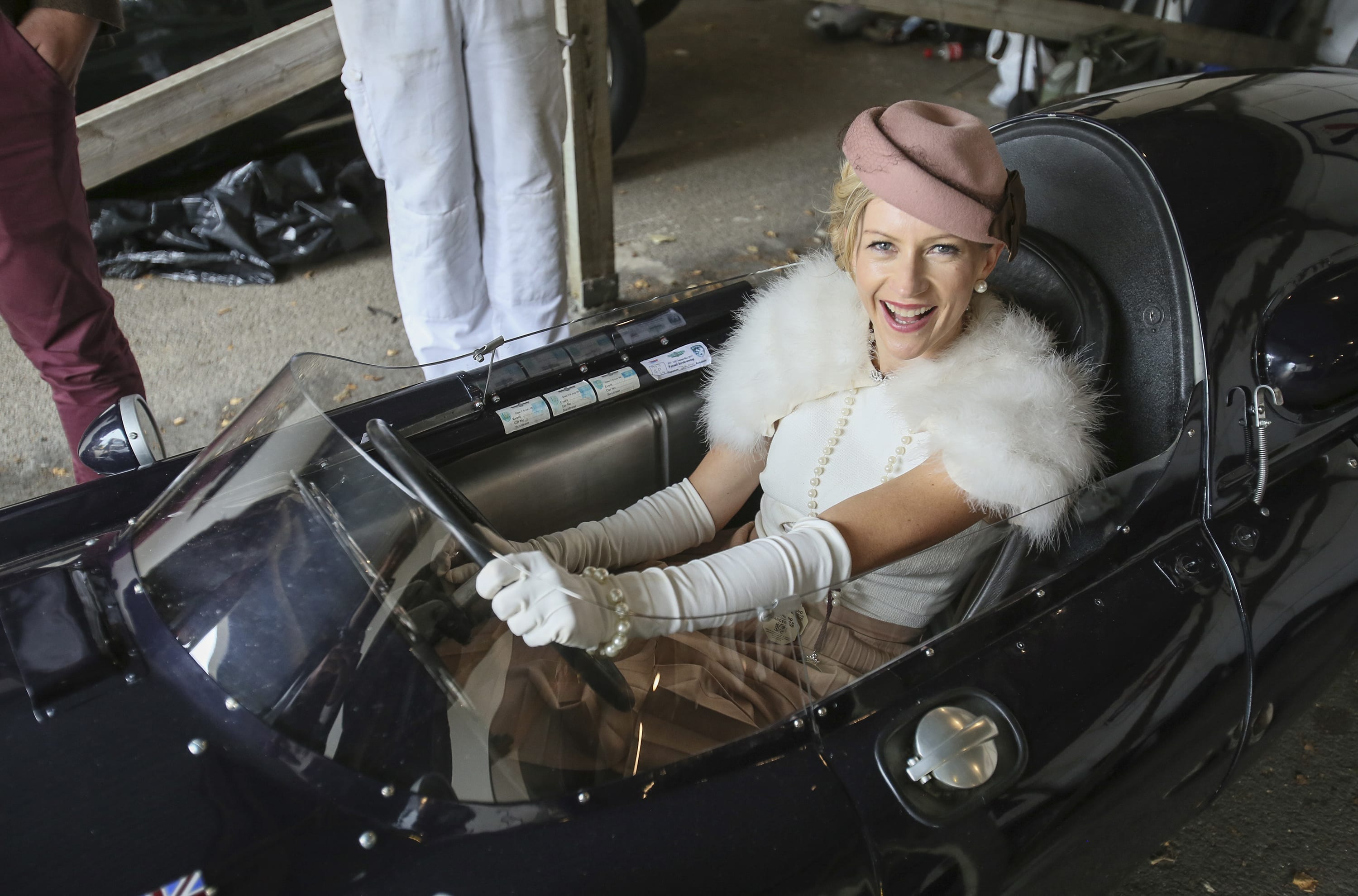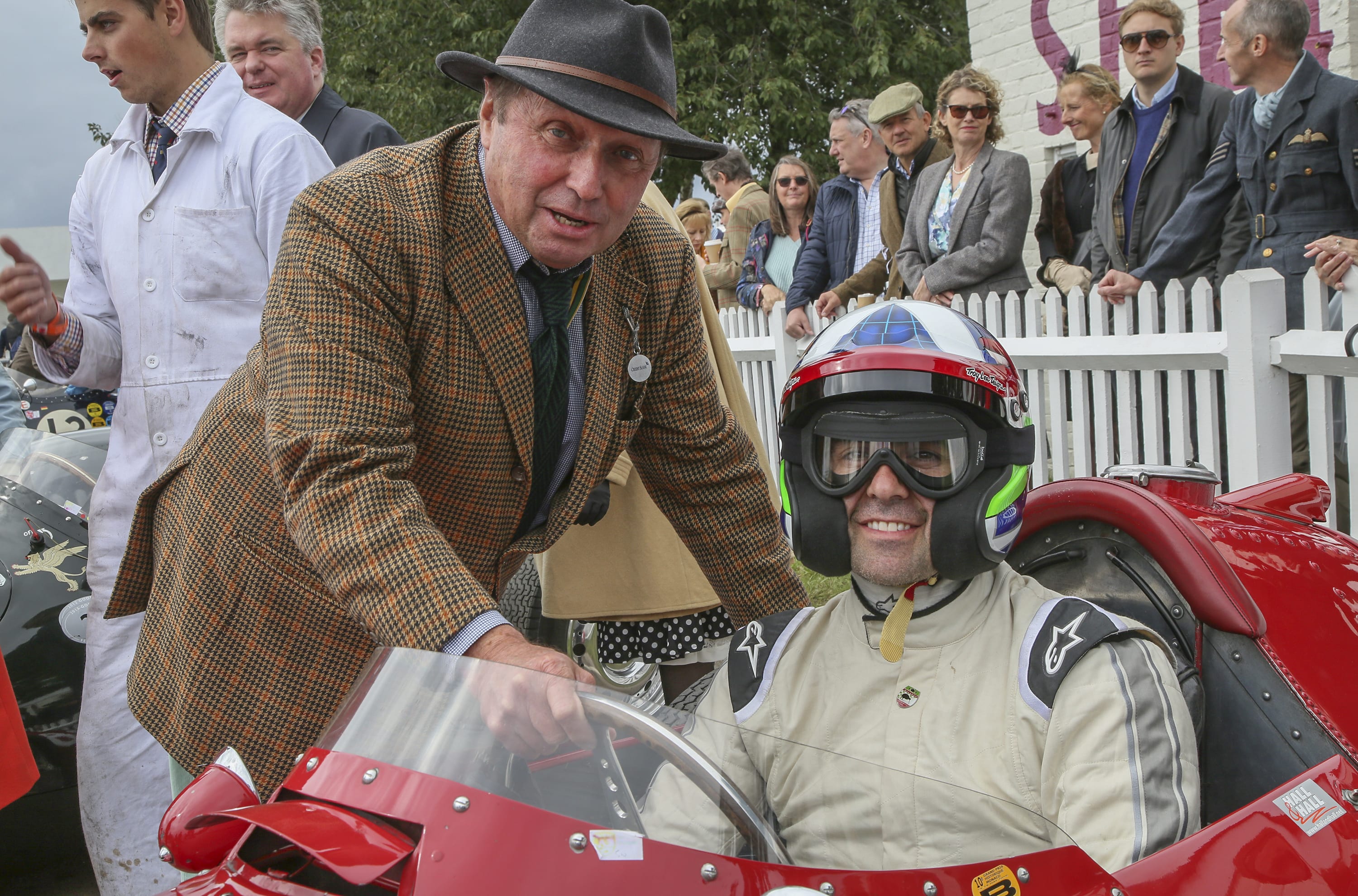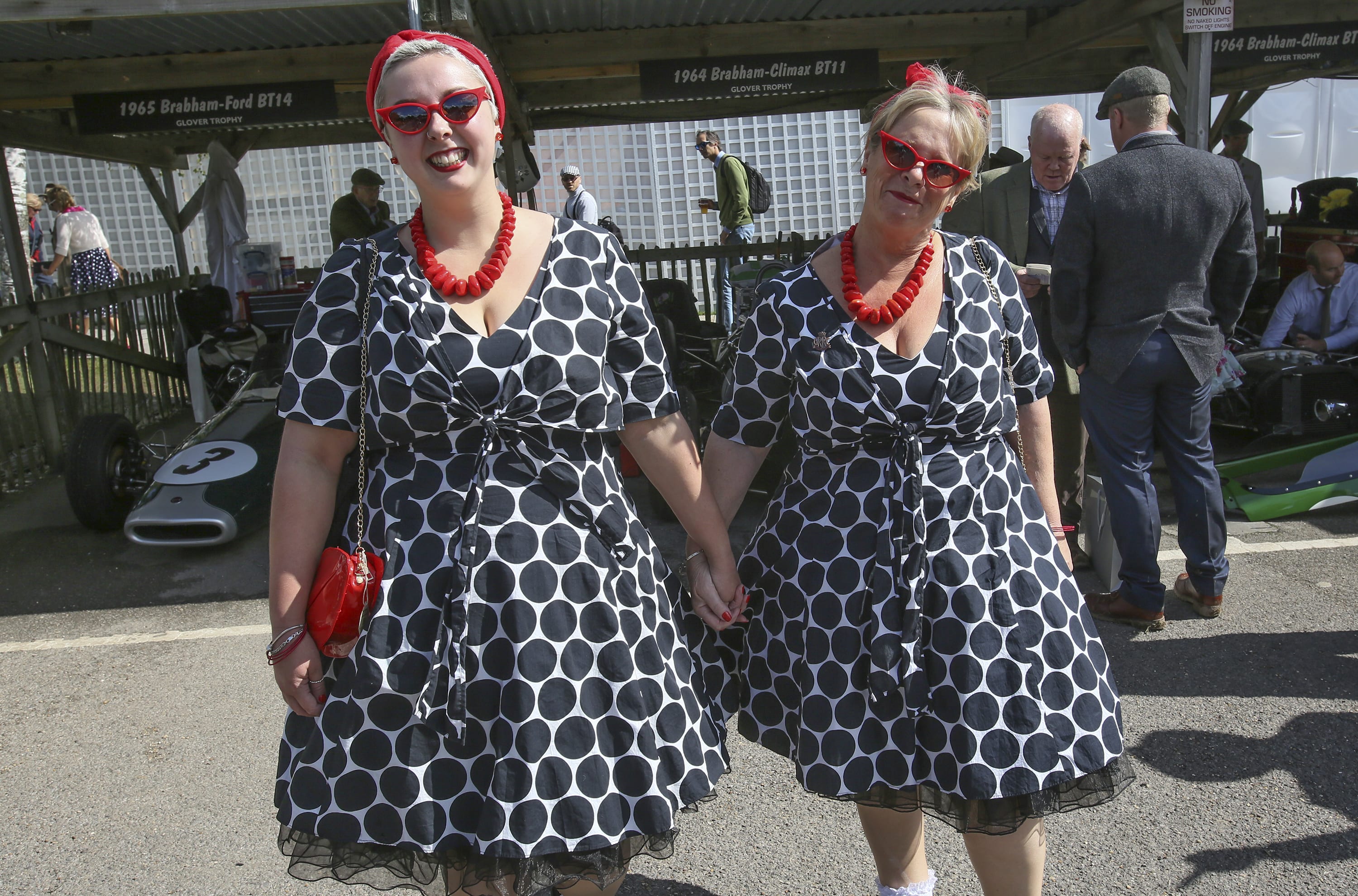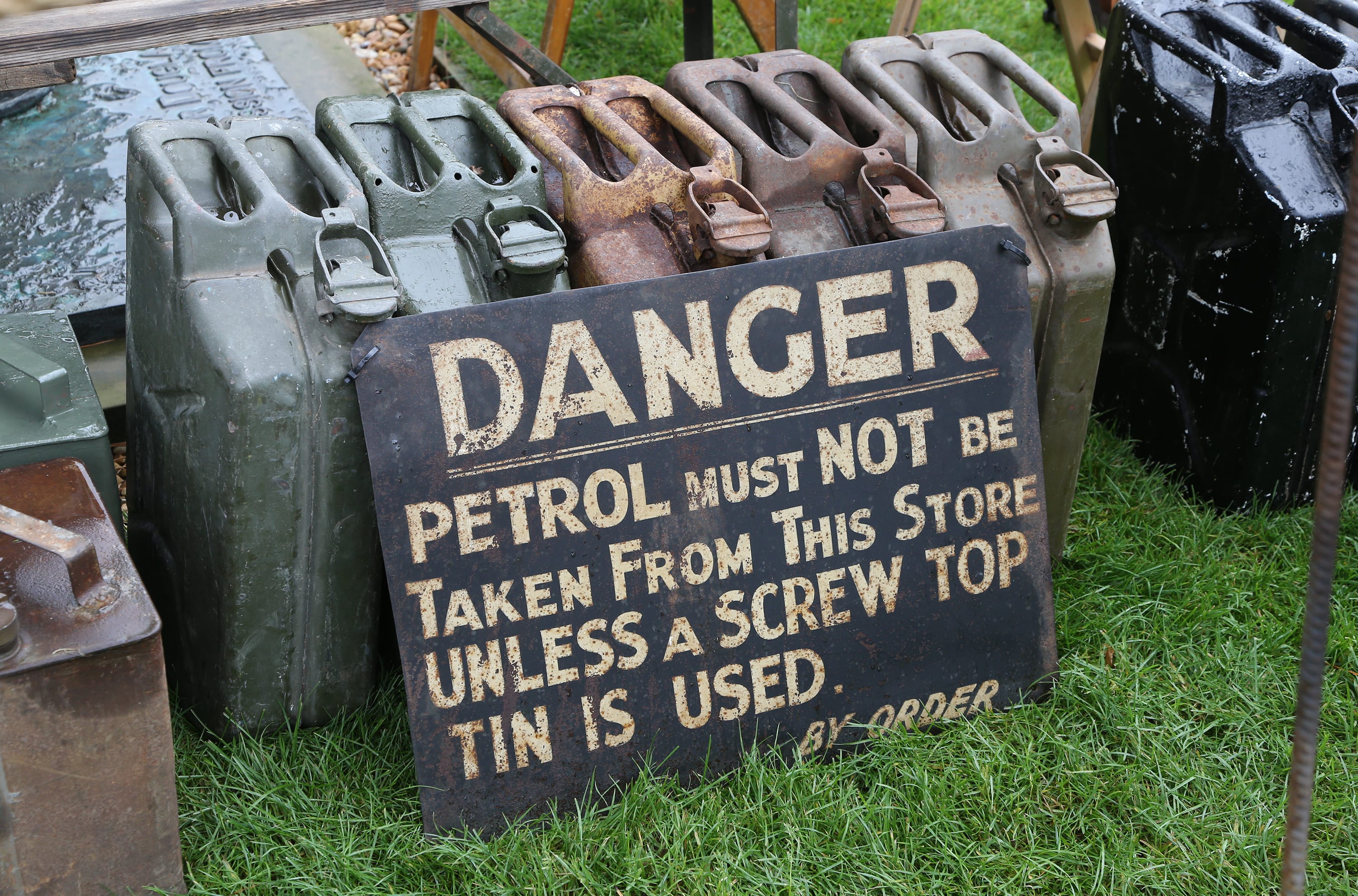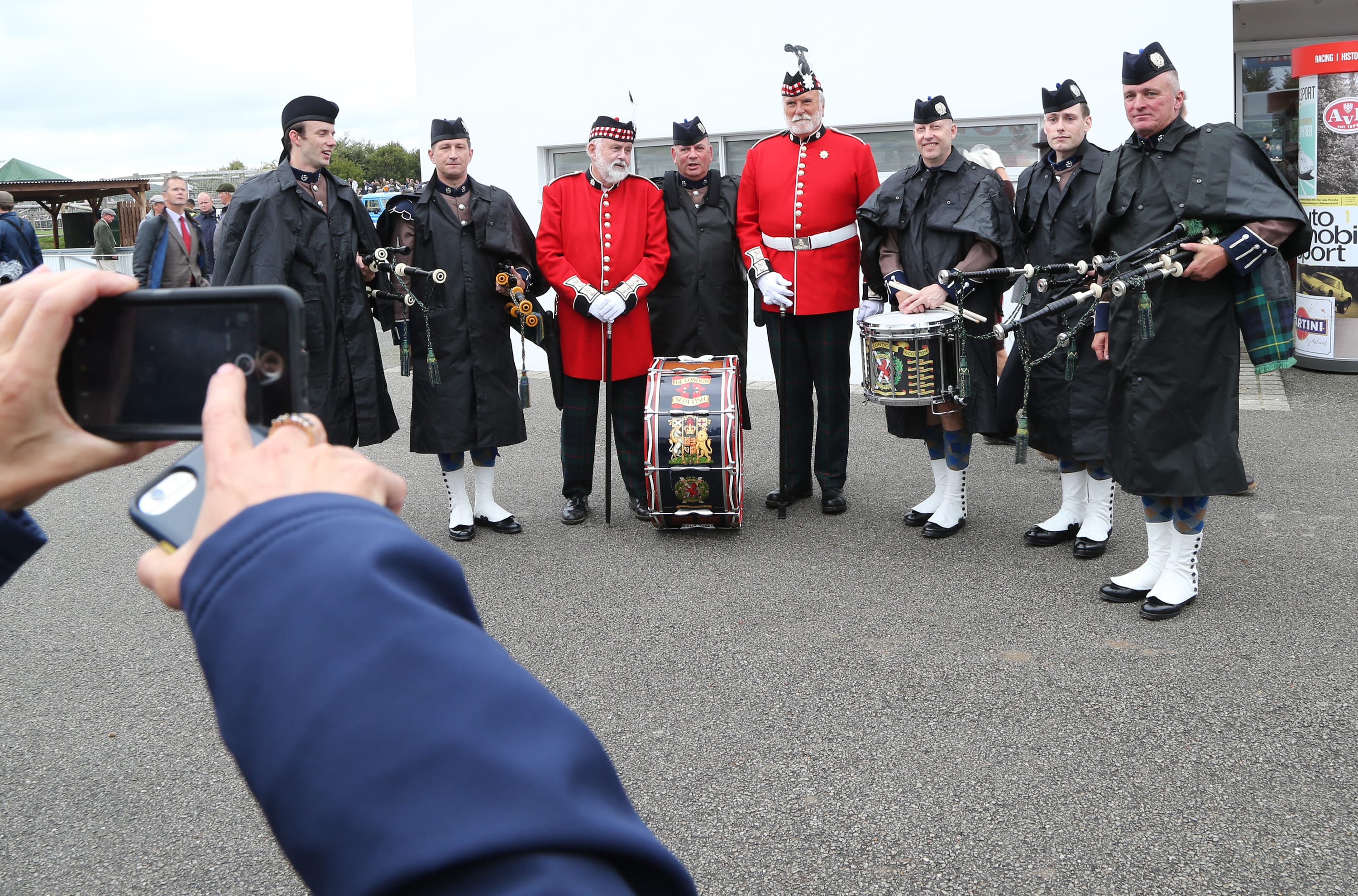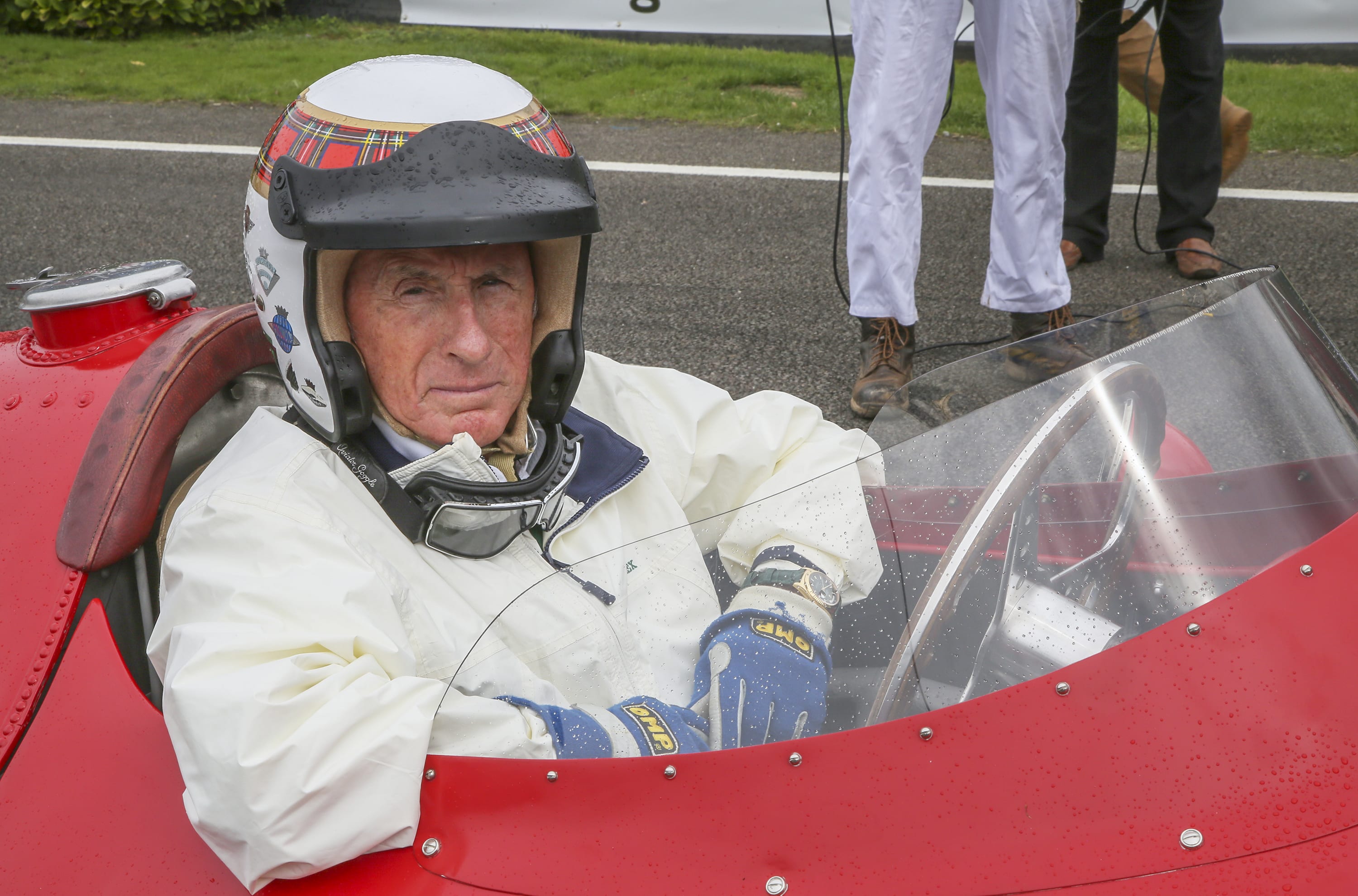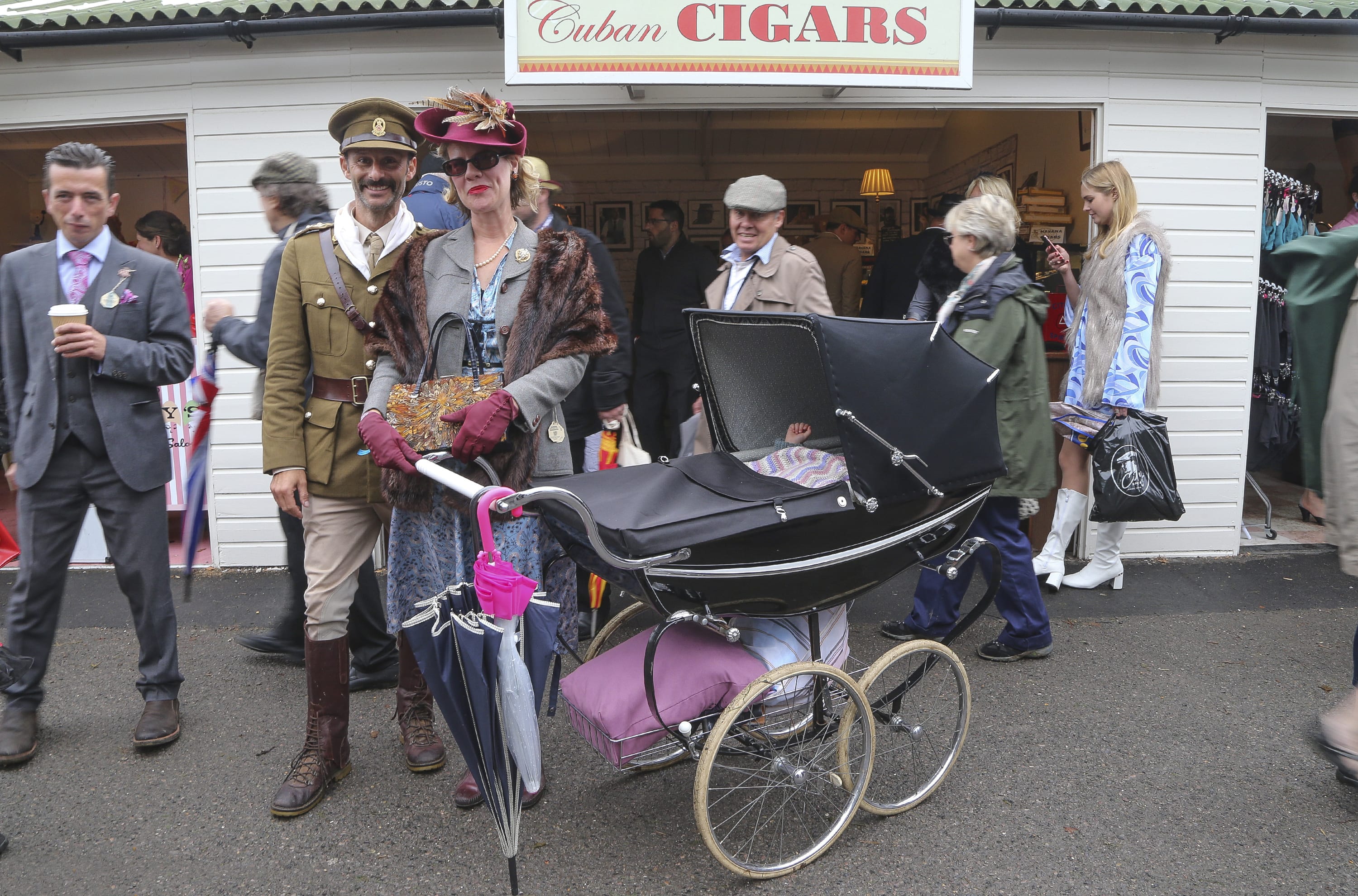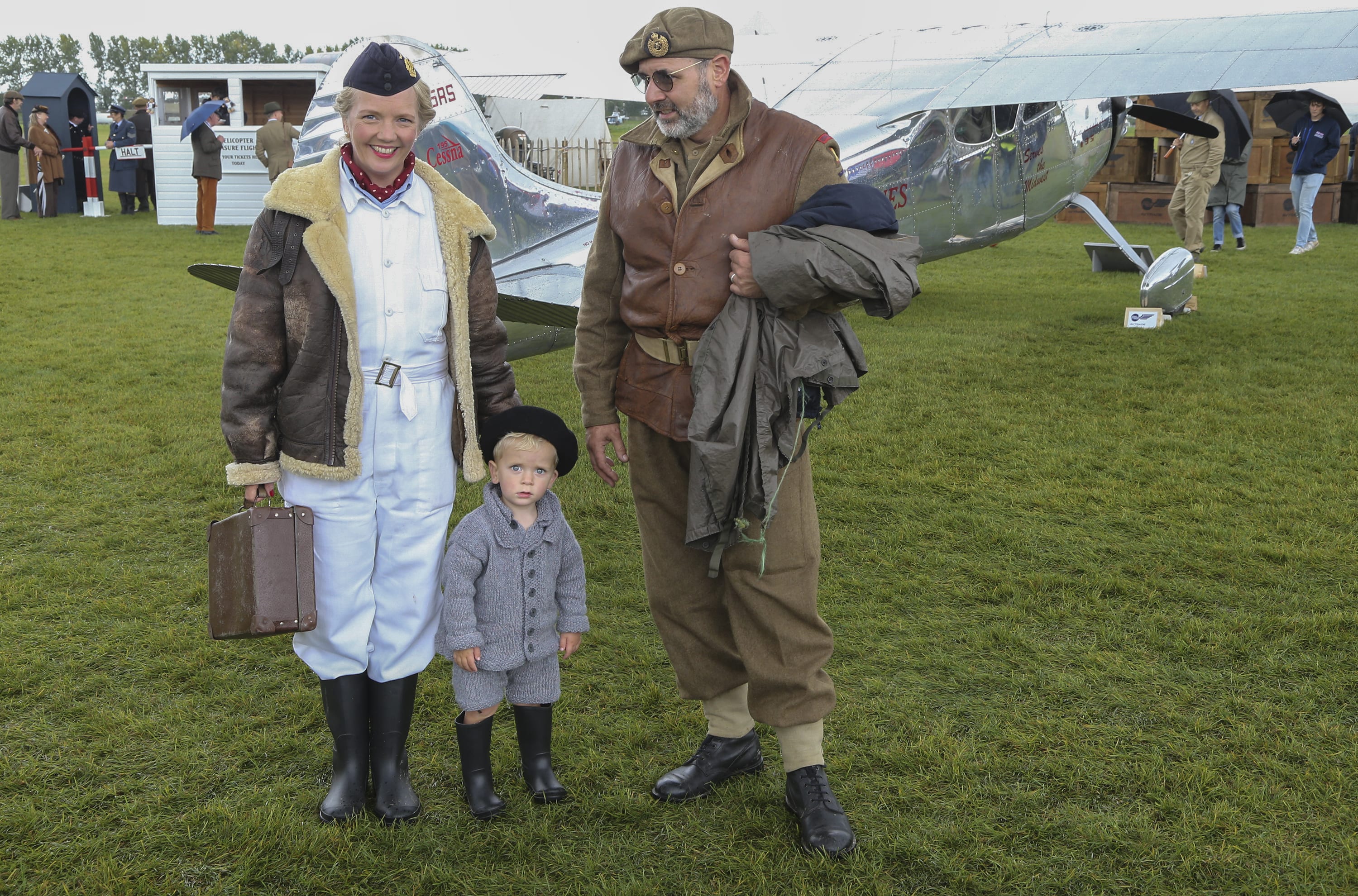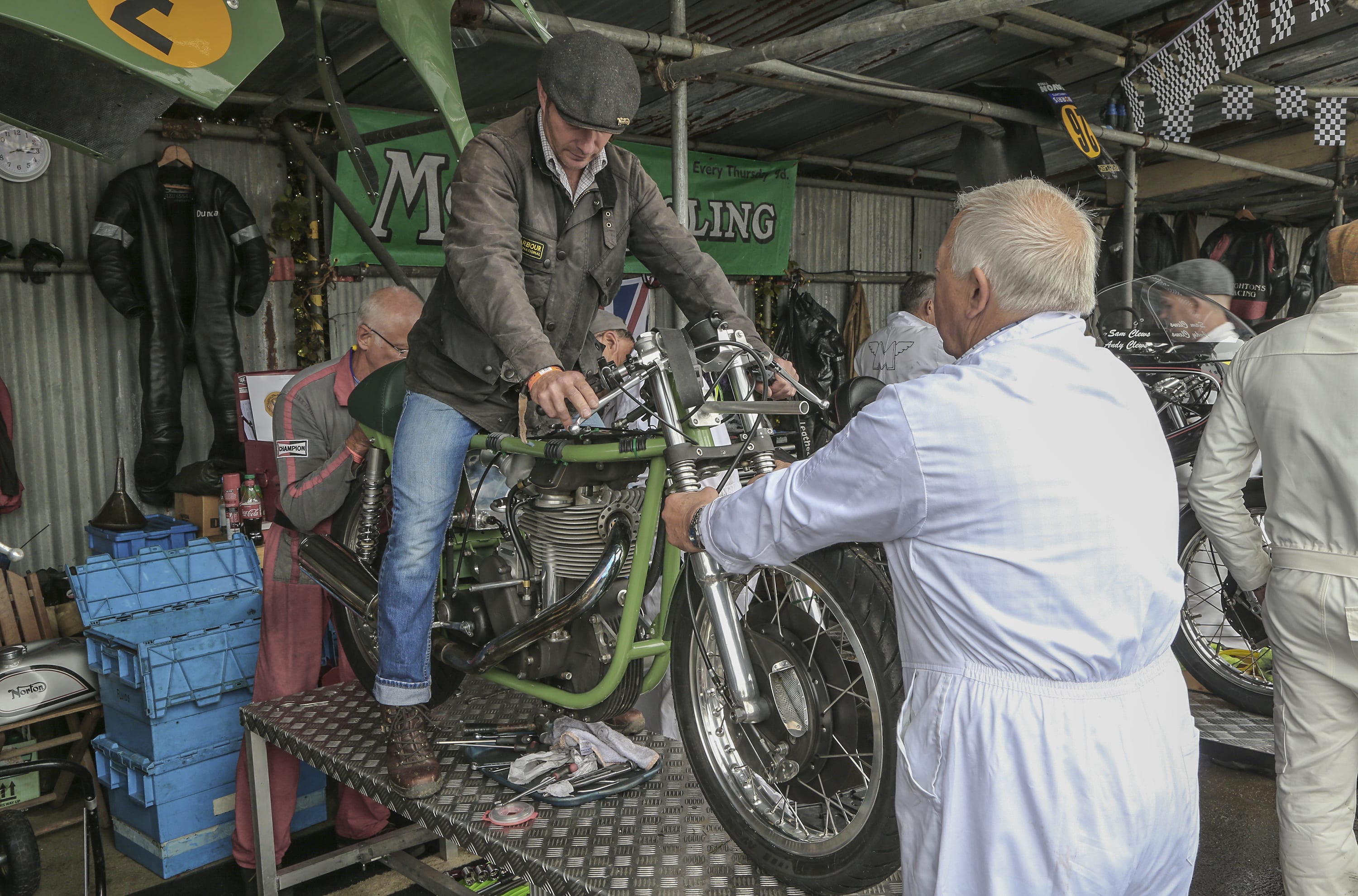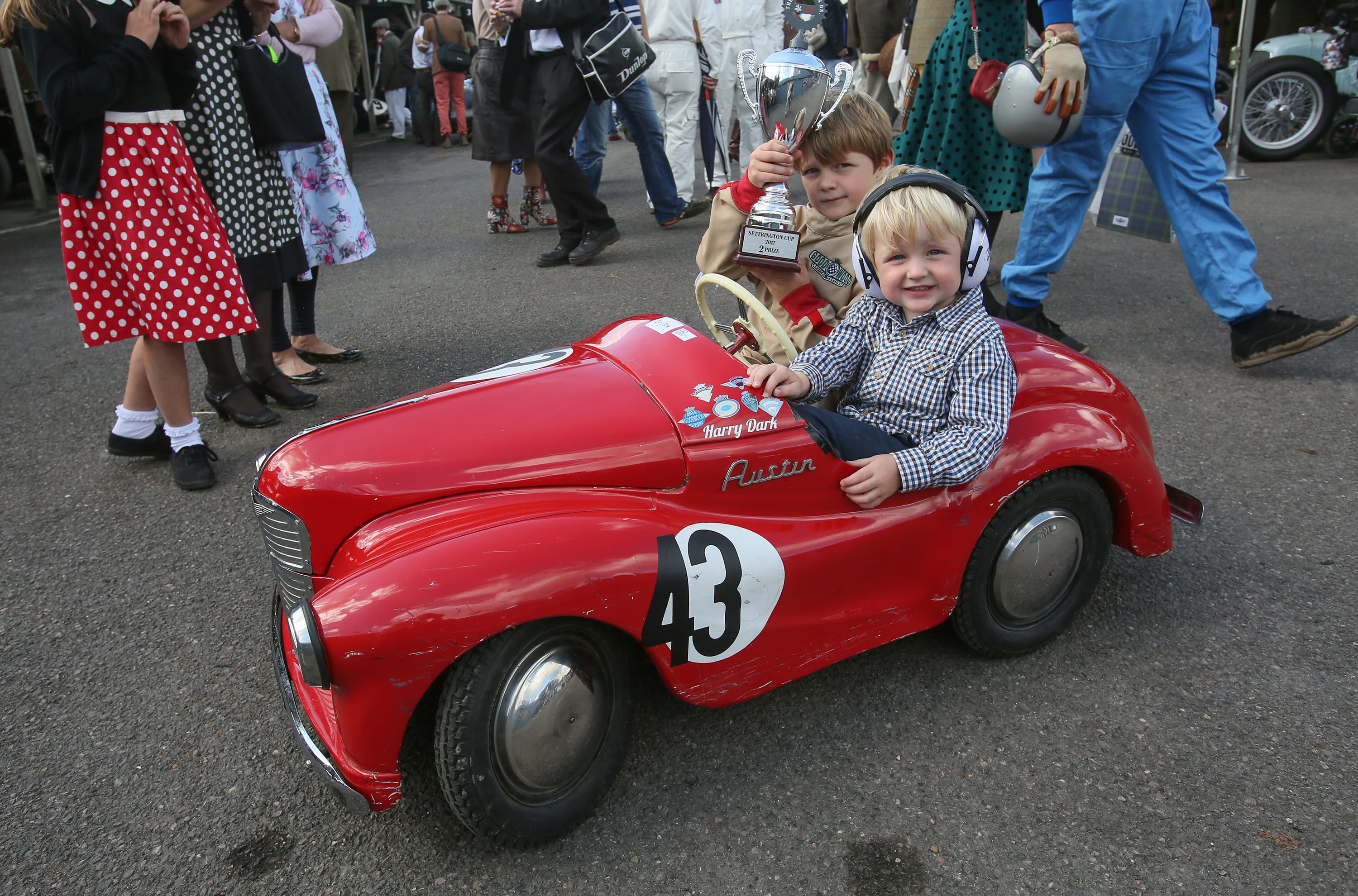Revs Institute on the Road: I Know What You Did Last Summer, Part Three

On Sunday, September 10th, the last day of the Goodwood Revival in southern England, rain again threatened, but nobody cared. The English are used to rain. Besides, the crowd was fixated on driver Tony Brooks being reunited with a Vanwall, the car he drove to victory and fame six decades ago.
Brooks, now age 85, piloted the Vanwall at Goodwood with a grin that could have stretched from Penzance to Dover. Members of the crowd, outfitted in period dress, applauded approbation, and the motoring press along with Goodwood officials crowded around him and the Vanwall. Brooks was truly and properly “chuffed.” That’s British English for “pleased.” Very pleased.
There were 16 races at the Goodwood Revival, a sister event to the Goodwood Festival of Speed held in mid-summer, ranging from 20-minute sprints to one-hour events. But Brooks and the Vanwall weren’t racing; they were part of a “Special Parade” of mid-1950s Grand Prix cars.
The parade included the likes of Maserati 250Fs, a Lancia Ferrari and a BRM. But this being Britain, the crowd’s collective heart was with two English cars that had been shipped to the Revival from their Naples, FL home at Revs Institute: Brooks’ Vanwall and a diminutive 1957 Cooper-Climax T-43.
Both have special status in the history of British motorsport. In 1957, Brooks and Stirling Moss (now Sir Stirling) drove a Vanwall — with its unique teardrop shape that reduced coefficient of drag, to victory in the British Grand Prix at Aintree. This was a “Rule Brittania” moment, the first World Championship win by a British car.
Brooks was impressed that so many people at Goodwood remembered the win 60 years ago. “At the time, the Continental cars (Maseratis and Ferraris) really dominated the situation,” Brooks recalled. “Tony Vandervell (creator of the Vanwall) is always credited with saying, ‘We must beat those bloody red cars.’ ”
Always the gentleman, Brooks added, “Excuse the language, but I can’t quote him properly if I modify it.” He went on to say, “So that’s exactly what he did.” Brooks also thanked Miles Collier, owner of the Vanwall and founder of Revs Institute, for sending the car to England for the occasion.
Back a few rows in the parade was the Cooper-Climax, which raced to fame in Buenos Aires, Argentina, January 1958. Beating the odds and confounding the opposition, Stirling Moss drove this very car on ever-balding tires to a Grand Prix win. It proved that mid-engine cars provided a lighter, more efficient and better-handling package. With that, the mid-engine Formula 1 revolution began.
Driving the Cooper was Ollie Crosthwaite of the renowned English historic-car shop, Crosthwaite & Gardiner. He drove the car for the Friday, Saturday and Sunday parades, while for the first two days Rob Hall of Bourne, England’s Hall & Hall guided the Vanwall. Those two shops are among the best in England at caring for vintage race cars.
Goodwood’s Revival wound up Revs Institute’s active summer of 2017. In addition to the Cooper Climax and the Vanwall, the 1927 Delage Grand Prix car was also at the Revival. While the Cooper and Vanwall participated in the Revival’s special parade, the Delage was simply on display, getting a well-earned rest after a busy year of crisscrossing the English Channel to attend various vintage-car exhibits or events.
Those included Retromobile, the classic-car show held every February in Paris, a couple showings at the Brooklands Museum near London and a special gathering of surviving Delages at the Autodrome de Montlhéry, just south of Paris, the historic track where Delage scored its first racing win in 1927.
Now the Vanwall, Cooper and Delage are back home among the 100-plus other classic cars in Naples at Revs Institute, where the staff is working on which cars will attend which events in 2018.
######
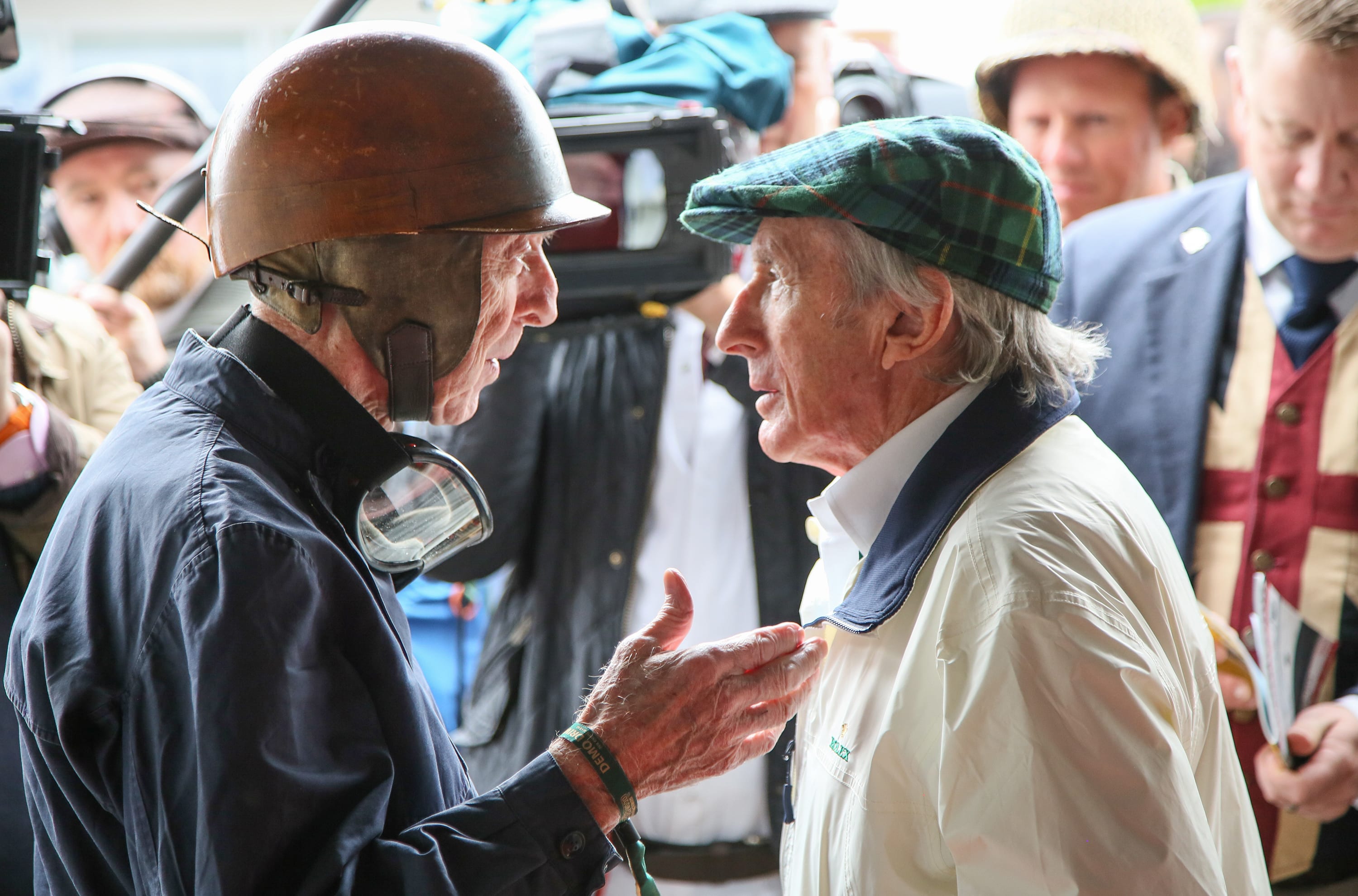
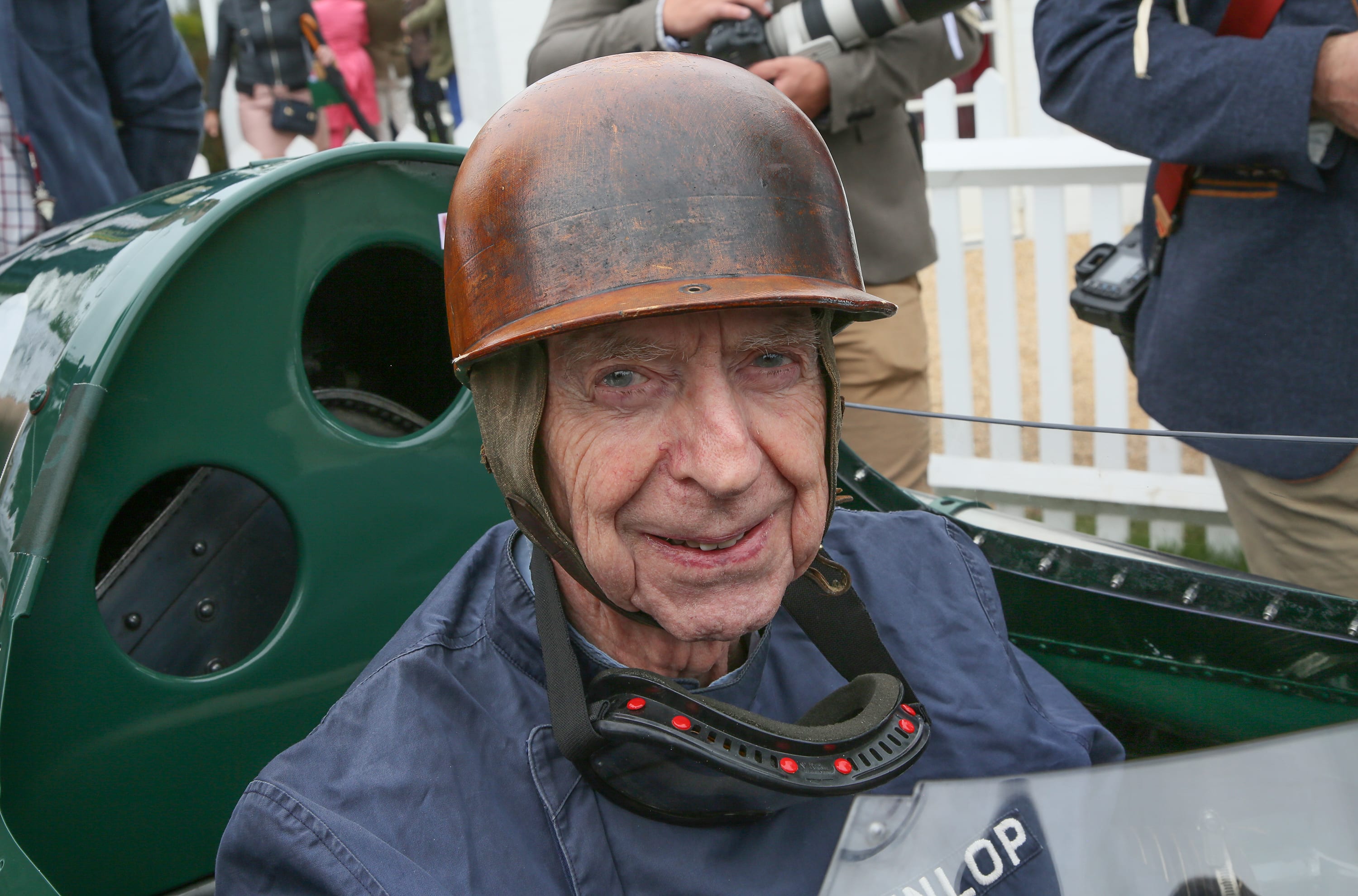
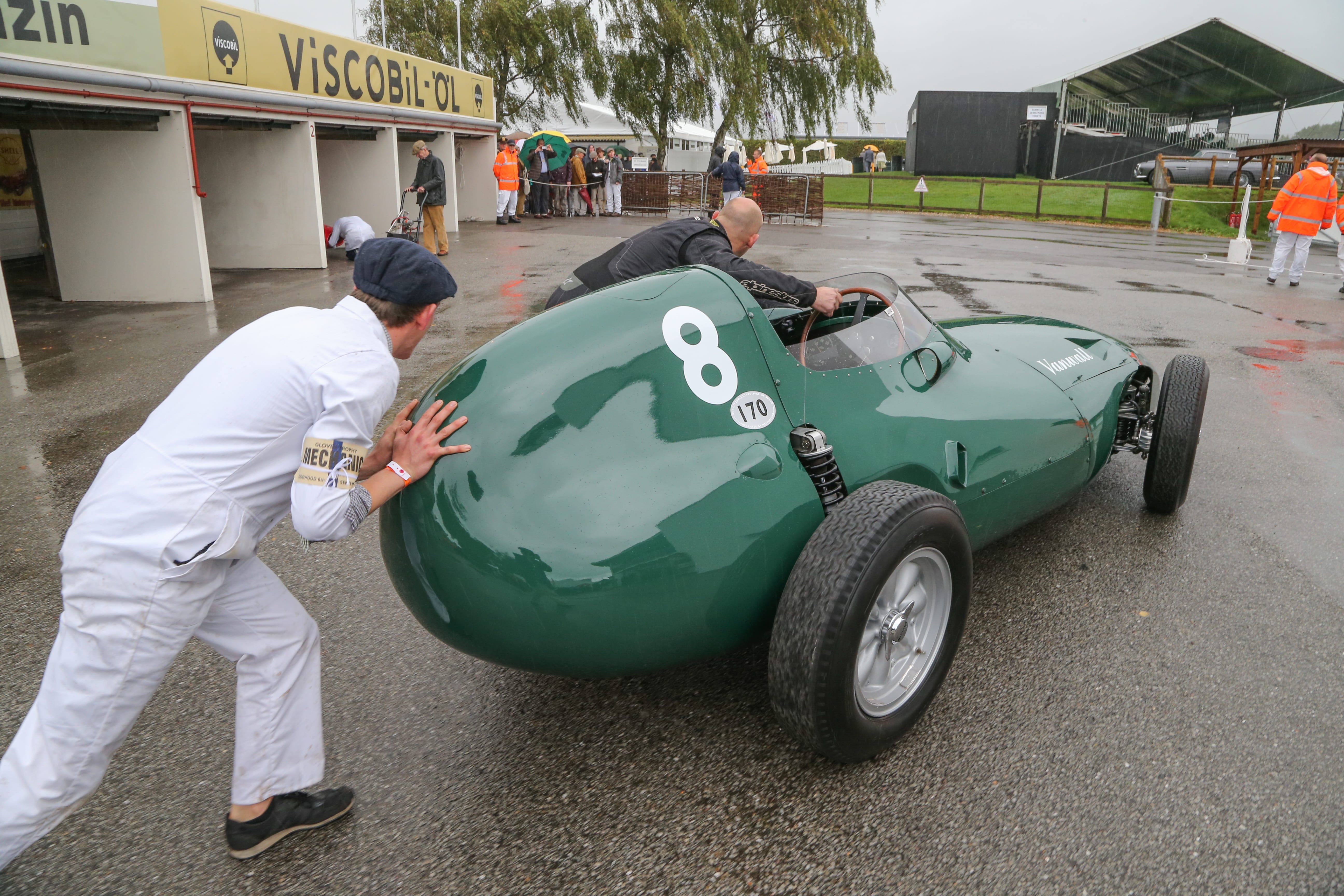
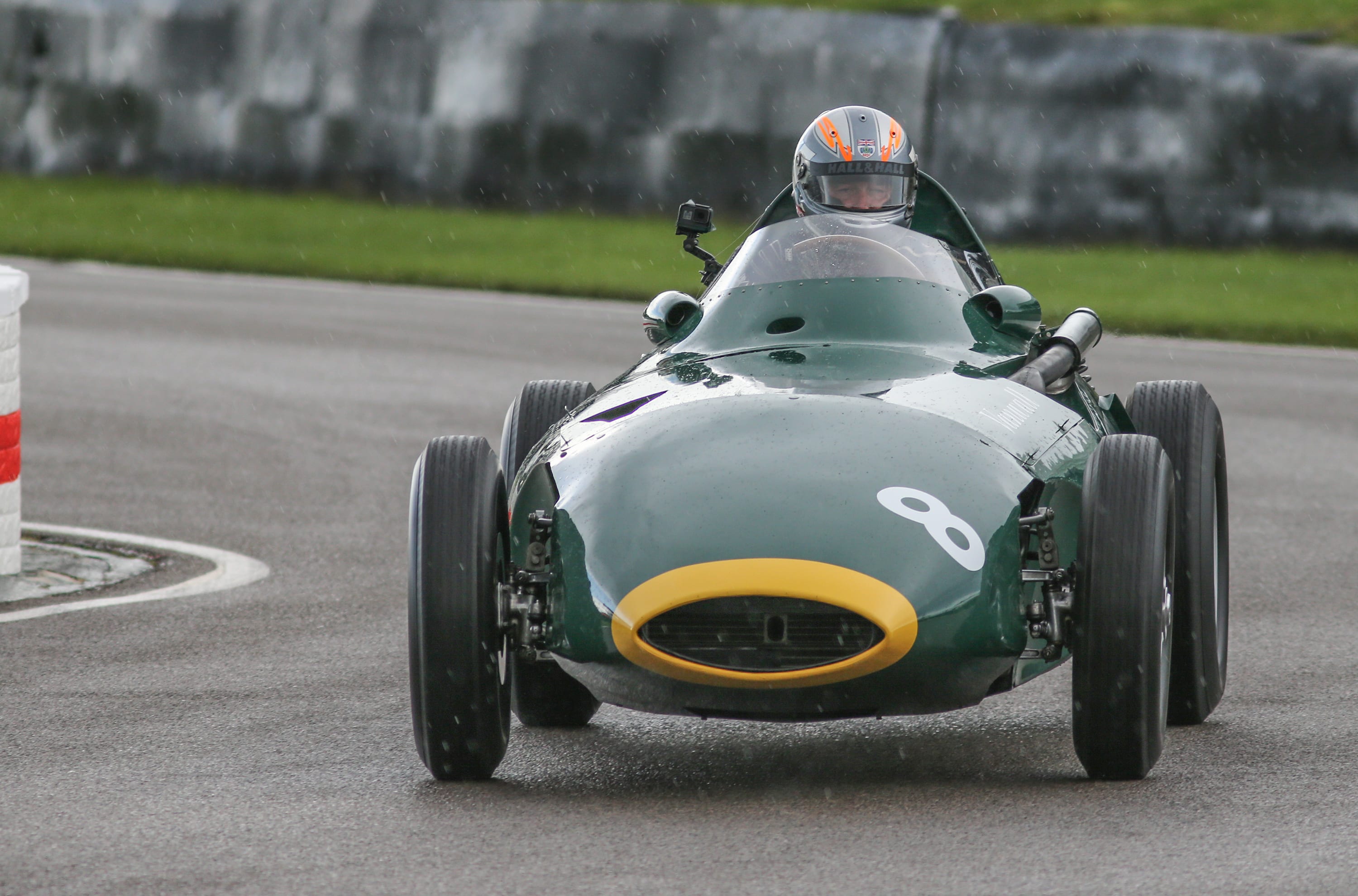
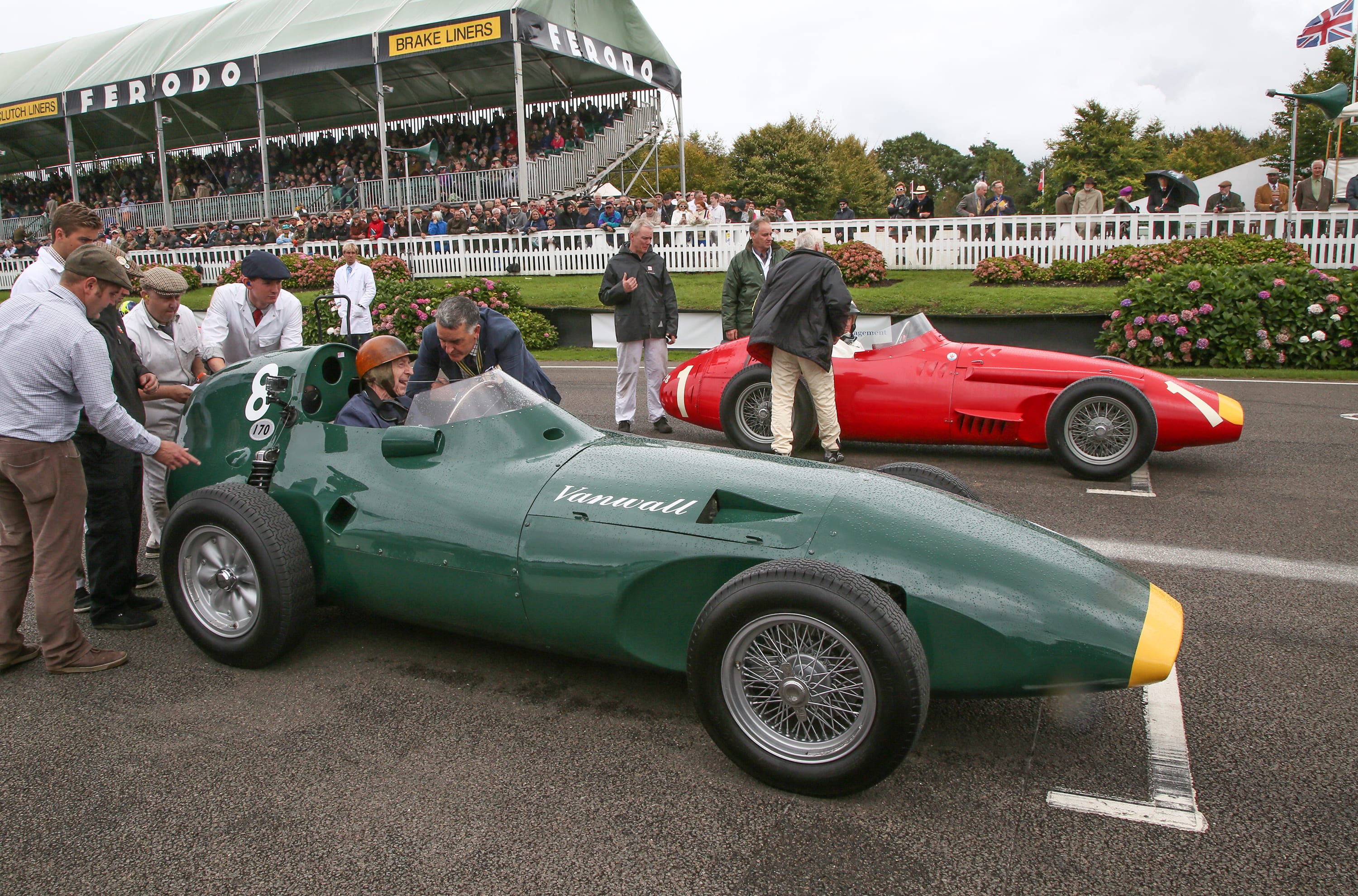
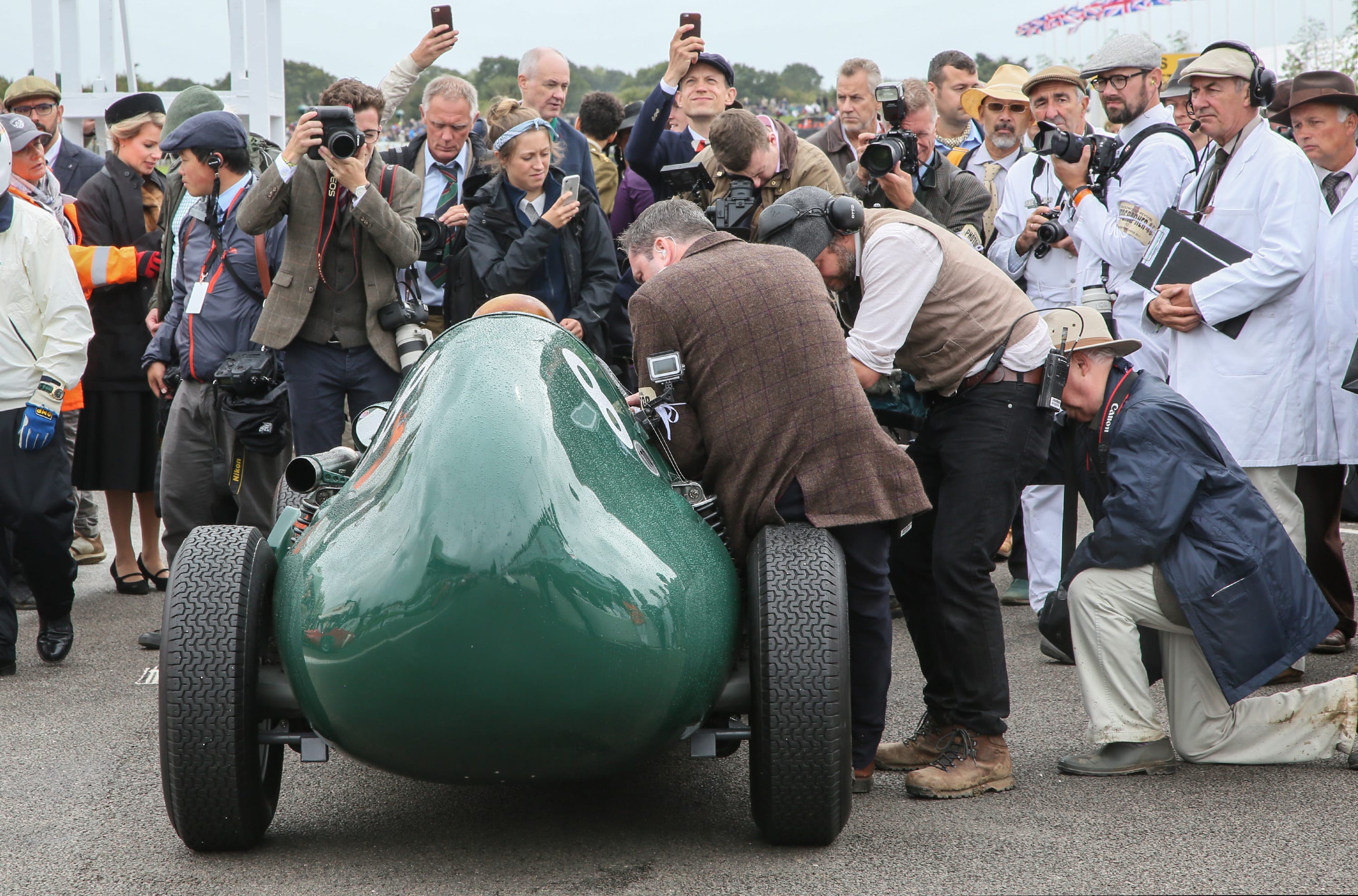
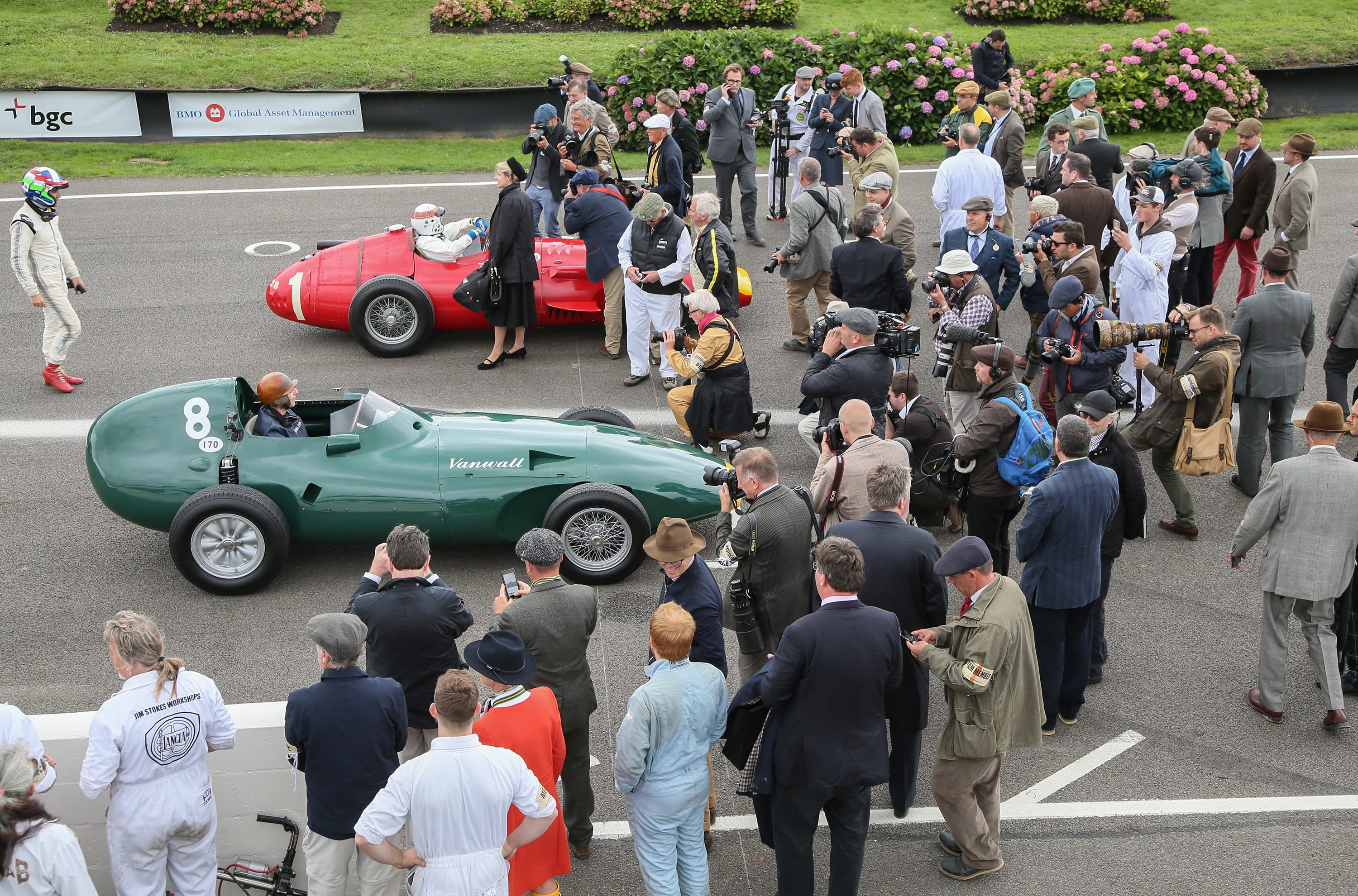
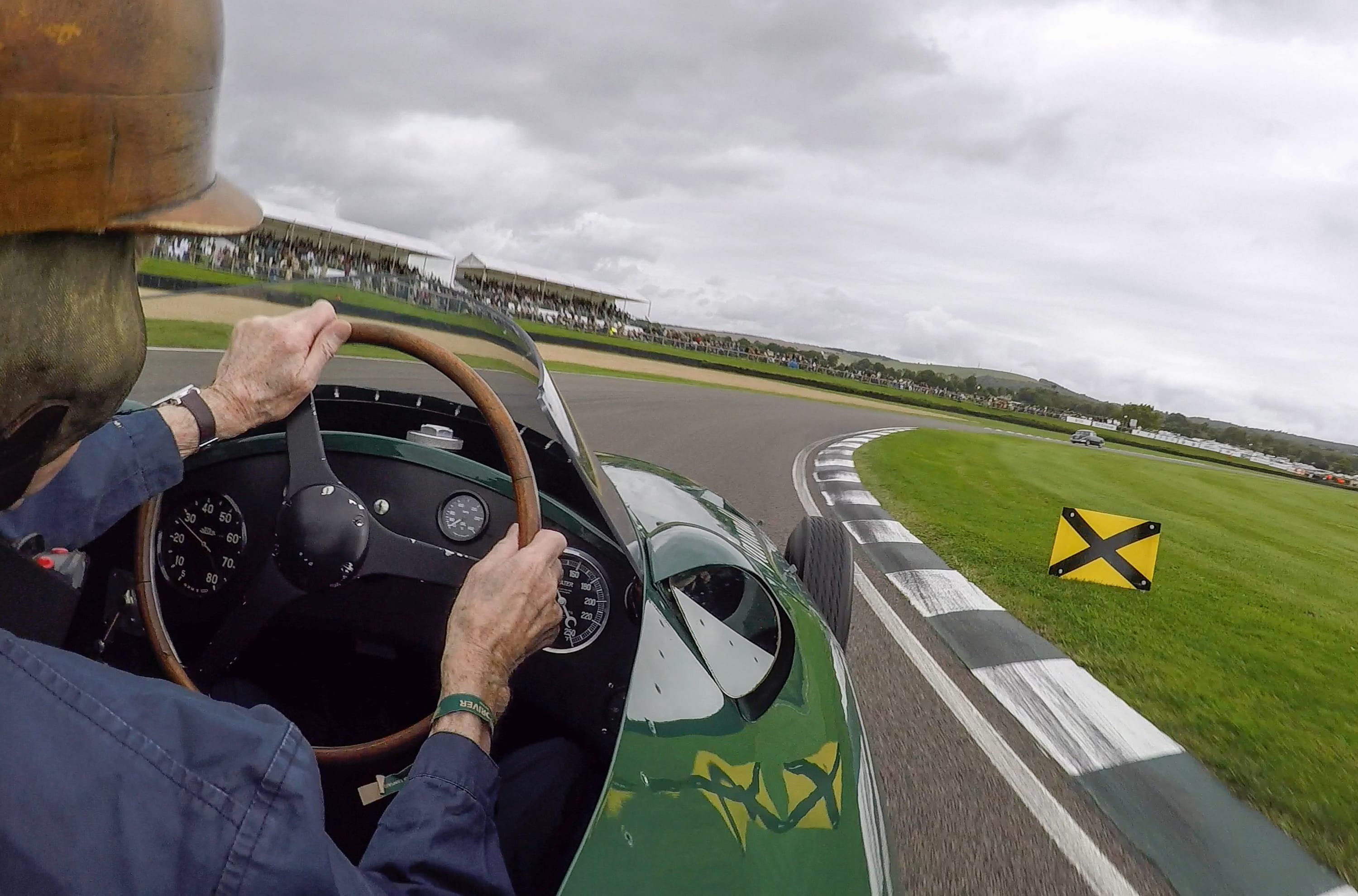
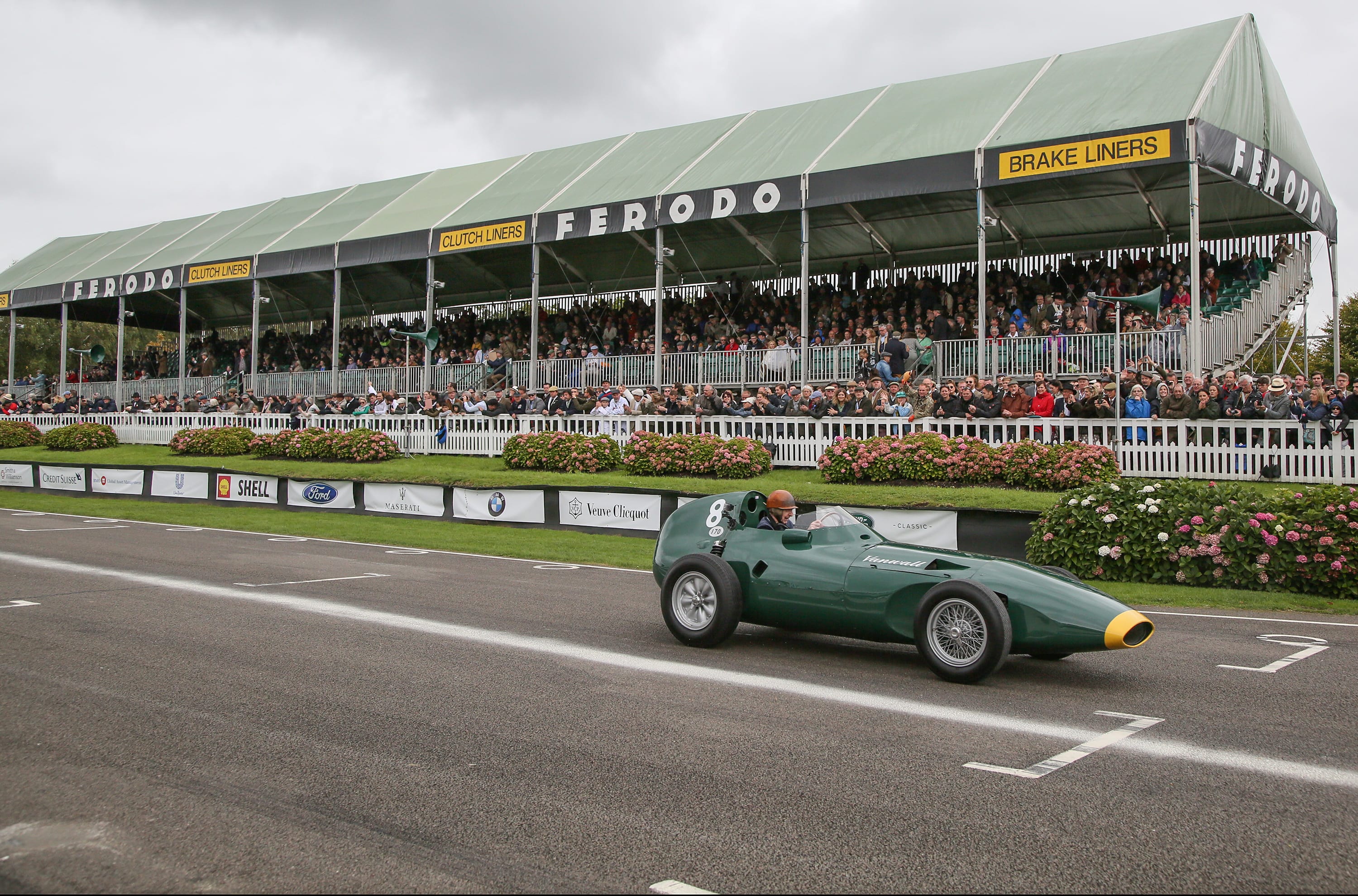
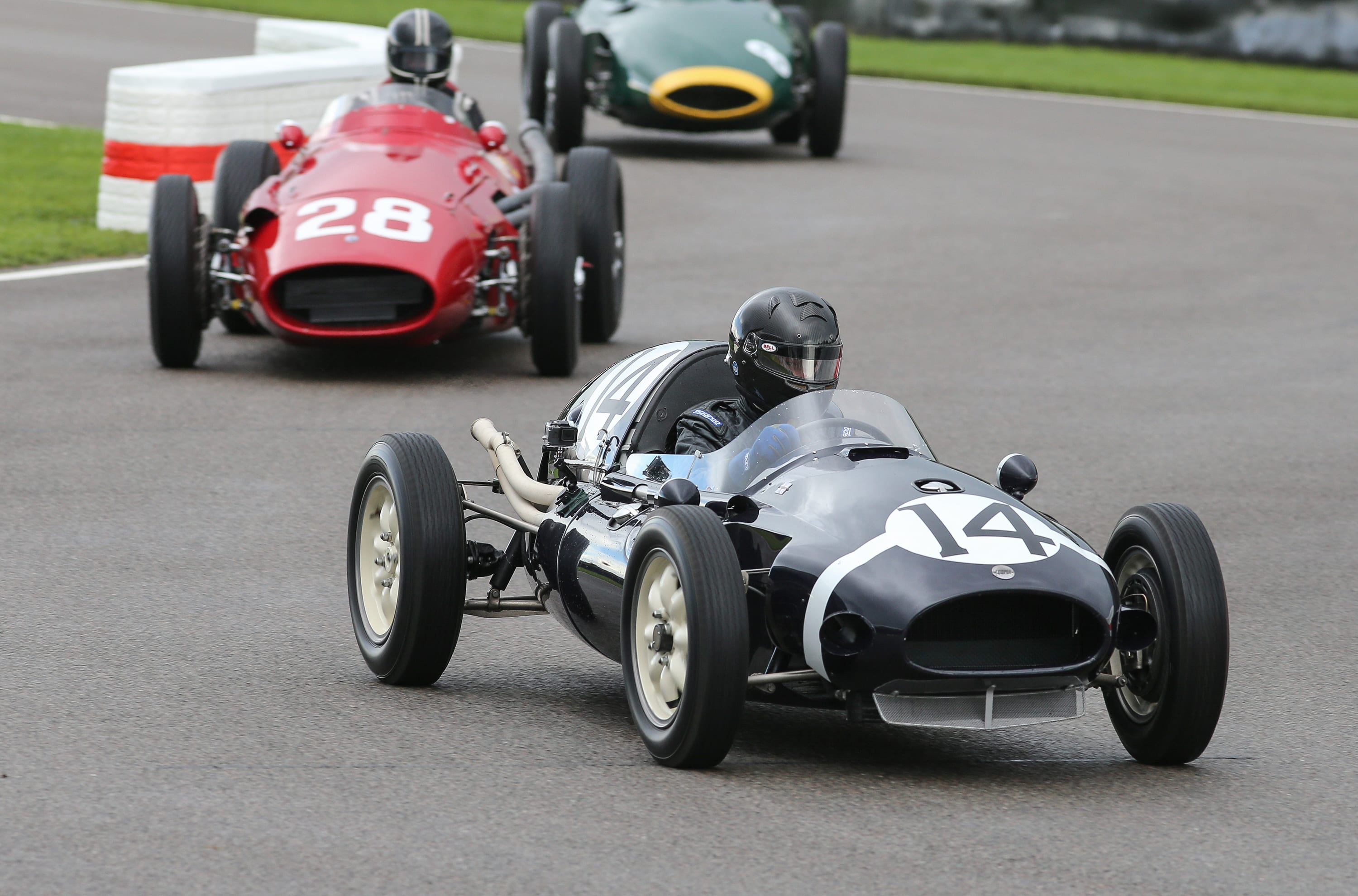
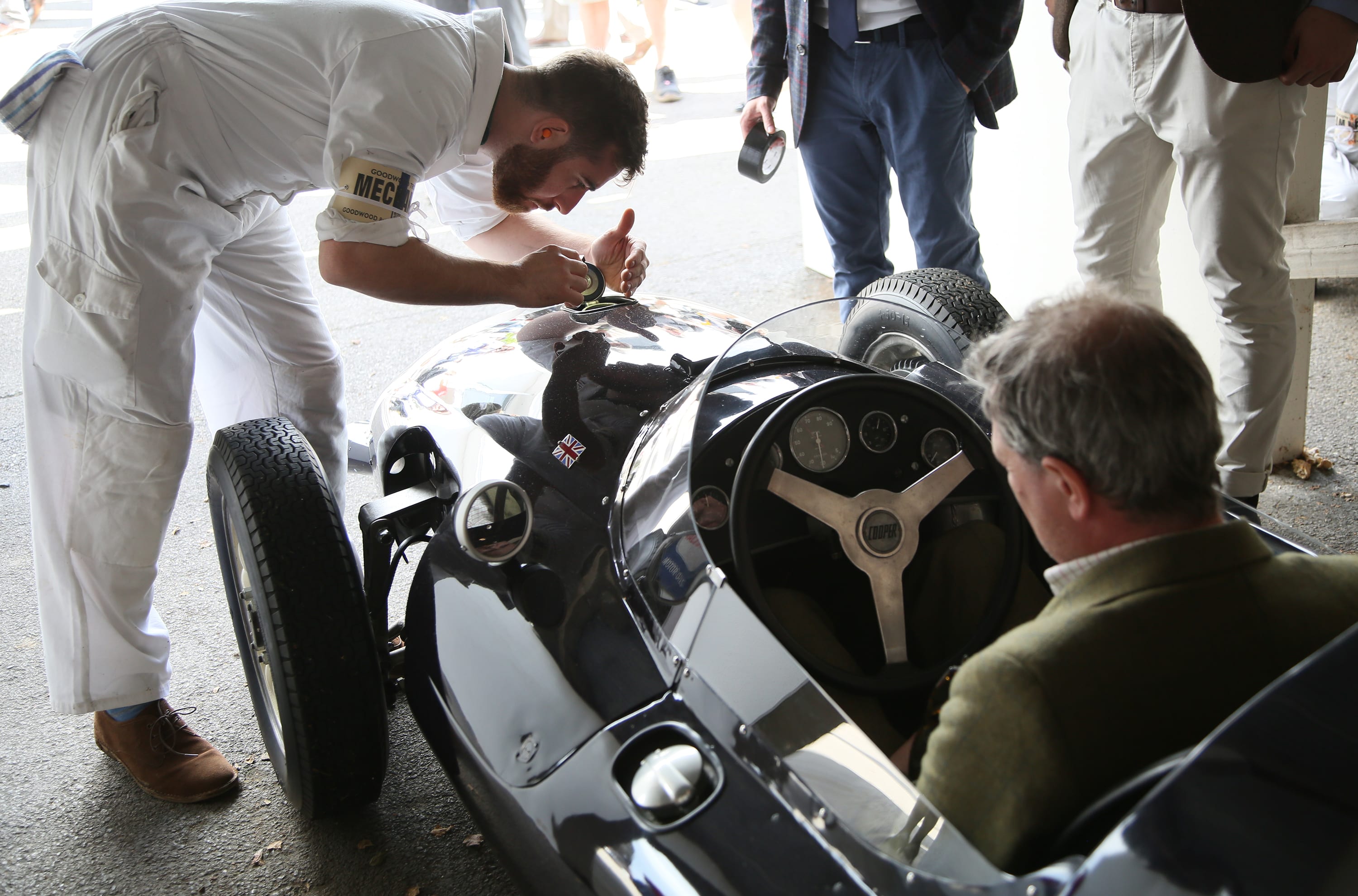
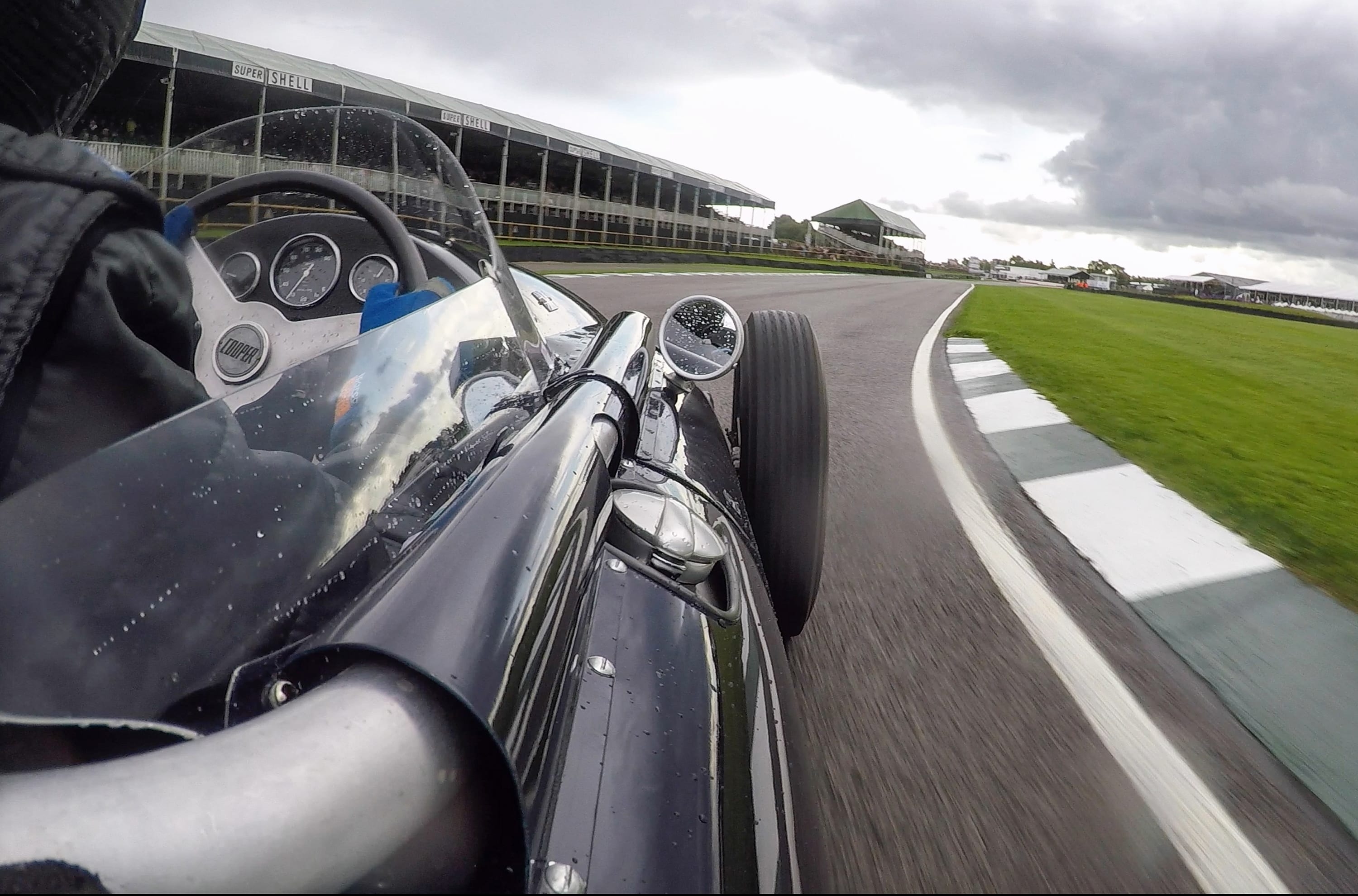
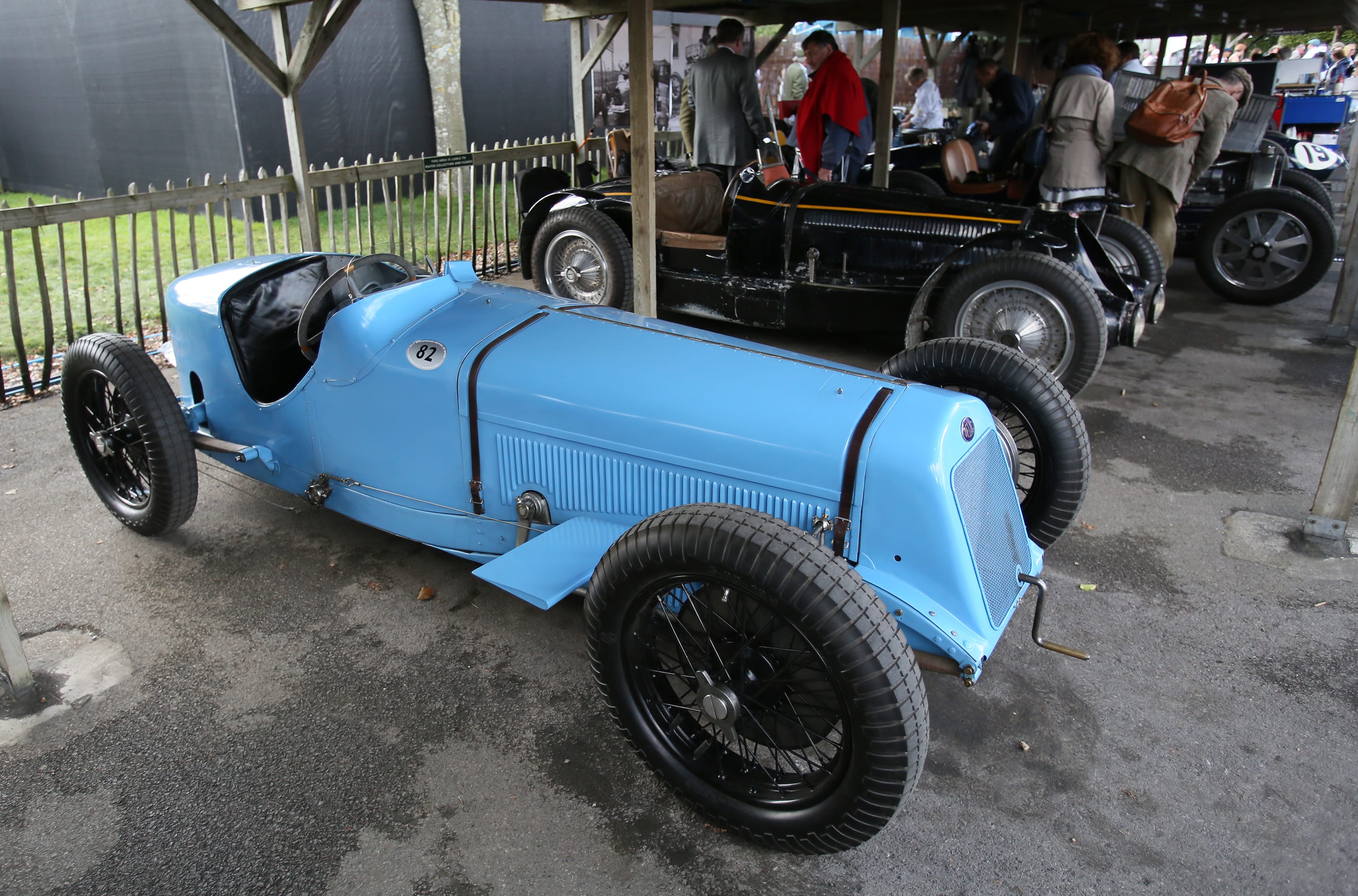
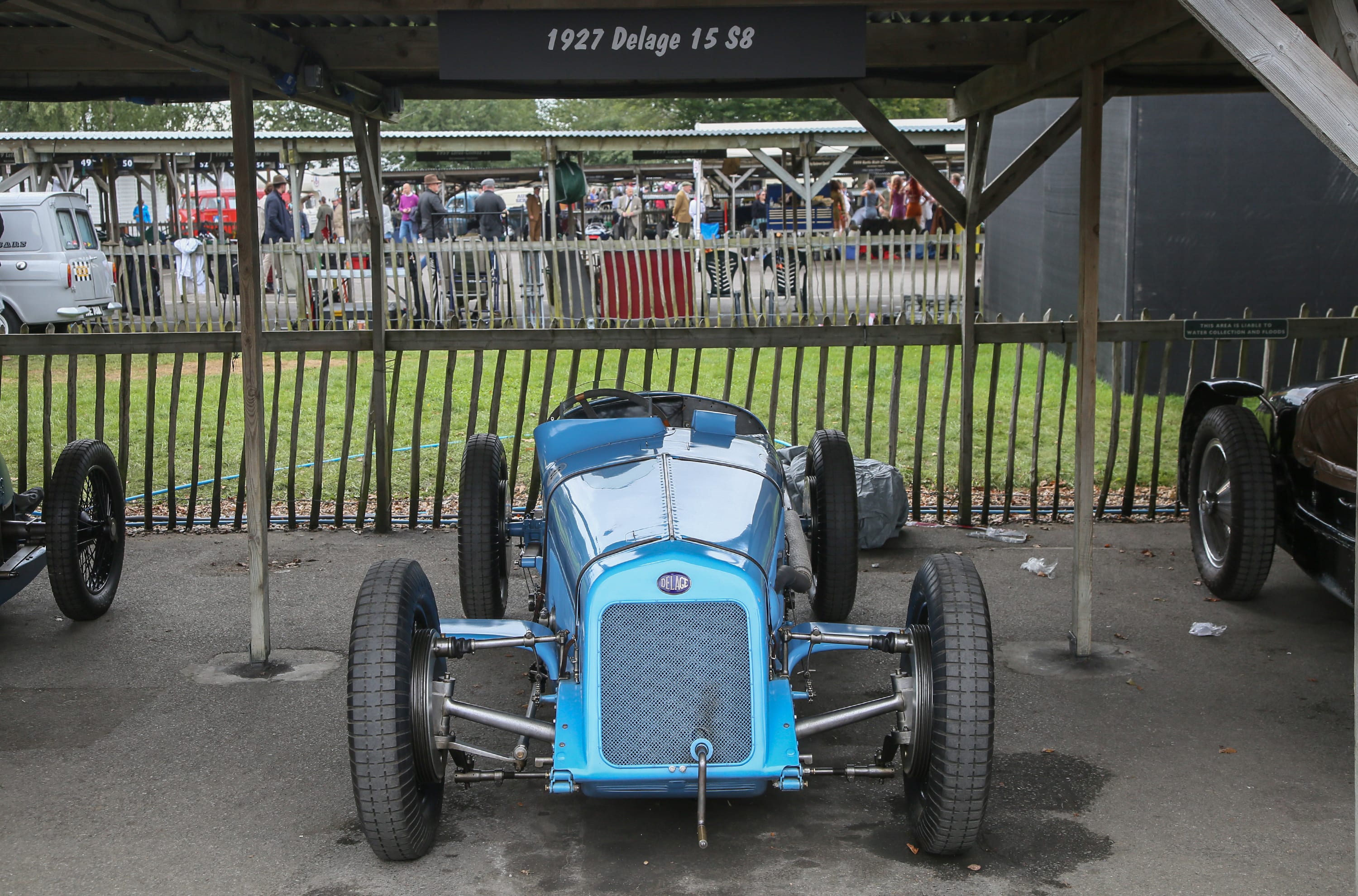
There’s more to Goodwood than cars…
For all the noise and action out on the circuit at Goodwood, it can be just as much fun to wander the infield. To get in the paddock you need period dress. Could be 1930s or 1940s dresses for the ladies. A military uniform for the gents or at least a tie, proper coat and a flat cap.
You can walk right up to World War II fighter planes. Get a haircut at the Goodwood Barber. Watch the motorcycles being tuned. Listen to bagpipers.
Then there was the sight of the ersatz Tazio Nuvolari.
About the only thing you can’t do at Goodwood is not have a good time.
